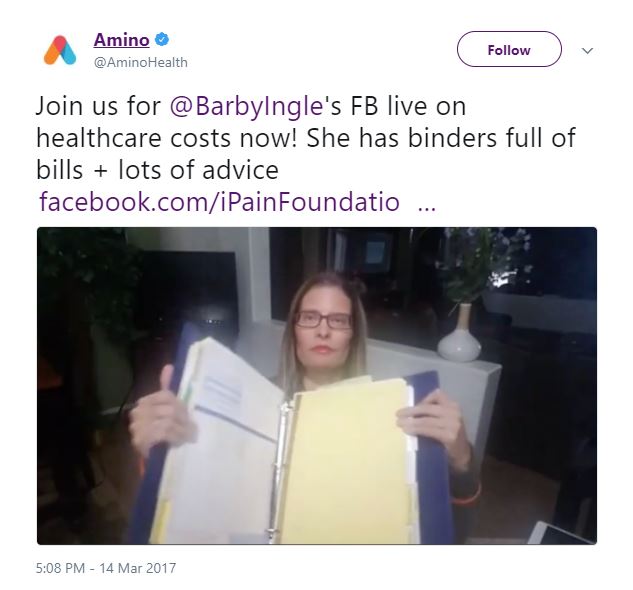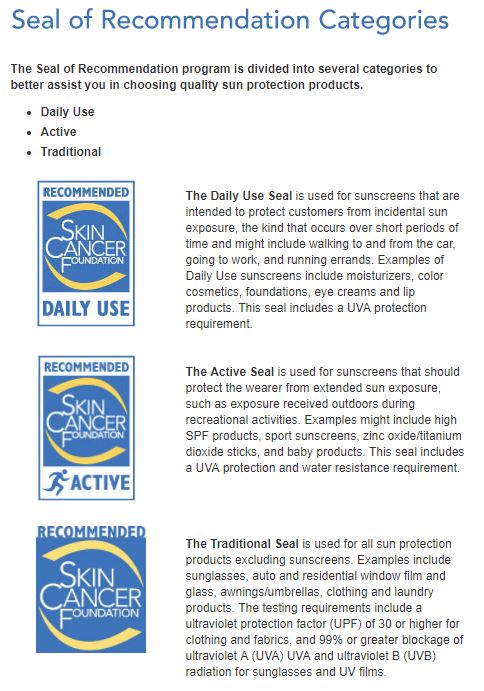
Healthcare marketers have an overwhelming number of tools, techniques, and platforms to connect with their audiences. The challenge is narrowing down the choices to what’s most effective – and understanding how changing patient behavior is affecting the process. One strategy that is gradually moving into the spotlight to reach wider audiences and generate engagement: healthcare influencer marketing. What is it? Why should you consider it for your healthcare brand? What does it take to make it pay off? Let’s break it down now.

In simplest terms, influencer marketing is promoting something through people with the ability to shape the perception of your brand. These people are called influencers. Think of Michael Jordan in Nike commercials. Or William Shatner as the Priceline Negotiator. Their popularity put them in a position to influence their fans’ buying decisions. Influencer marketing has been around in healthcare for decades, though it has significantly evolved these past few years. You might remember one of the most popular early examples: when Bob Dole did TV commercials for Pfizer to promote Viagra. Now, a lot of influencer marketing is happening virtually – whether it’s forums, social media platforms, or blog posts.
Much like influencers in other industries, a healthcare influencer is someone who uses their expertise, credibility, or personal experiences to impact the health-related decisions and behaviors of their audience. These individuals come from all walks of life. They can be licensed professionals like doctors, nurses, and dietitians, as well as “regular folks” who have overcome health challenges similar to those faced by their audience. Celebrities and public figures with high name recognition and a unique health journey can also wield considerable influence. By sharing their personal narratives, healthcare influencers create a sense of empathy and understanding that goes beyond the clinical realm, making them powerful advocates for promoting awareness, destigmatizing certain conditions, and encouraging healthy behaviors.
A host of factors make healthcare a great fit for influencer marketing. First, traditionally paid advertisements aren’t as cost-effective as they used to be. The average person is exposed to thousands of promotional messages every day. We’ve grown so accustomed to seeing them that we are starting to tune them out subconsciously – a phenomenon called banner blindness. This overwhelming, cutthroat competition for limited attention, as well as audience skepticism, are driving healthcare marketers to reconsider their tactics. Paid ads still have a place in the healthcare industry, but only within the context of what audiences are truly looking for: building relationships. Audiences are already connecting with healthcare influencers and participating in virtual communities online. Healthcare influencer marketing simply introduces the conversation on those platforms. With something as critical as health, credibility is everything. Influencers, who have earned their audiences’ trust, come across as more believable than even the most polished messaging from a healthcare brand. Finally, the internet has changed the way people are managing their health. A wealth of information and reviews about symptoms, healthcare providers, and treatment options have empowered them to become equal partners in the process. These research stages are great opportunities to communicate with influencers.

There are multiple advantages to collaborating with healthcare influencers. They hold a lot of credibility and have a strong online presence, allowing you to establish trust and engage more effectively with your target audience. Let’s explore these benefits in more detail:
Healthcare influencers have established strong relationships, trust, and credibility with their followers, who value their content and endorsements highly. By teaming up with a healthcare influencer whose target audience is related to yours, you can quickly establish trust within that audience and enhance your brand image.
Working with healthcare influencers can boost your brand’s content strategy by incorporating their unique content style and perspective. This can be especially beneficial when you need fresh content ideas or want to revitalize your outreach efforts.
By collaborating with influencers specific to the healthcare industry, you can position your content in front of social users who are already interested in your niche. This strategic alignment reduces the need for additional spending on audience testing, as influencers have already cultivated a healthcare social media audience aligned with your brand’s focus.
Inbound marketing is all about delivering value by addressing problems and providing valuable insights. Healthcare influencers are experts at understanding the needs of their followers, and partnering with them aligns your marketing efforts with this principle.
When you tap into the expertise and insights of healthcare influencers, your brand can become part of the conversations that matter most to your audience. This approach not only enhances the credibility of your content but also ensures that your marketing efforts resonate authentically with the concerns and interests of the people you aim to reach.
A collaboration with a healthcare influencer can lead to long-term relationships, opening doors to more collaborative ventures, live events, and other opportunities. By working together, you can establish connections based on shared interests and concerns, delivering meaningful value to their audience and enhancing your brand’s reach.
Influencer marketing has a long history in consumer products and services like cosmetics, restaurants, tennis shoes, perfumes, and clothes. It’s one of the highest ROI marketing strategies, averaging an incredible $6.50 for every dollar spent. There is tremendous potential for the healthcare industry as well. Wired magazine published an article featuring WEGO Health, a Boston-based web platform that connects pharmaceutical companies, medical device manufacturers, and hospital systems to healthcare social media influencers. Here are a few things to keep in mind to make healthcare influencer marketing work for you… as well as some examples of brands who have successfully pulled it off.
Healthcare influencer marketing can help throughout the entire scope of the process – all the way from awareness of a health condition, to diagnosis and treatment, and follow-up. Here are just a few ways influencers grow healthcare brands:
One Chicago hospital, Edward-Elmhurst Memorial, brought in professional race car driver Danica Patrick to speak at their “Healthy Driven” event. She added some star power and unforgettable moments, which you can see below:
Bottom line: influencers aren’t one-size-fits-all marketing solutions. The best choice for you depends on your goals.
Once you’ve decided on your marketing goals, it’s time to find the best influencers to achieve them. Who qualifies as an “influencer” anyway? Celebrities and other public figures come to mind immediately, but the label is actually much broader. Influencers can include:
American Cancer Society or AMA, can be just as powerful. One woman, Barby Ingle, has dealt with a chronic pain condition ever since getting in a car accident 15 years ago. She has turned her experience into patient advocacy. Here’s a Tweet from Amino Health discussing one of her Facebook Live streams:

Here’s a screenshot from the Skin Cancer Foundation website that explains its seals of recommendation. These can make all the difference to health-conscious shoppers searching for the best sunscreens and lotions to minimize their risk of skin cancer.

Where do you find influencers like this?
Start by paying attention to the people and organizations already talking about your brand. If former patients are sharing positive experiences on blogs and healthcare social media platforms, it’s easier to develop influencer relationships organically. You can also reach out to “bigger names.” Social listening tools, like BuzzSumo and Keyhole are great for finding the top social media influencers for specific hashtags, keywords, and subjects. Digital health platforms like WEGO health, a networking platform for influencers and healthcare brands, are also popping up. Remember, popularity doesn’t necessarily equal influence. It might be better to partner with a knowledgeable, well-connected influencer with 10,000 X (formerly Twitter) followers than a celebrity with 1 million. You have to take into account how well their audience fits with the message you want to convey. Poor targeting is why reality TV star Kim Kardashian faced a backlash after promoting the morning sickness drug Diclegis on her Instagram account. People complained that she had no medical training. The content wasn’t a good fit for the stuff she usually posts to connect with followers.
Also, keep in mind that the size of the influencer will play a role in how much you pay them. Influencer categories are often based on follower count:
In general, influencers with larger followings charge more for their campaigns and may only work with certain brands. While mega-influencers can offer vast reach, they may come with a higher price tag (soccer superstar Cristiano Ronaldo reportedly makes $3.2 million per sponsored post) and potentially lower engagement rates compared to nano or mid-tier influencers. The key lies in striking a balance based on your specific marketing goals and budget constraints.
The Case for Micro and Nano-Influencers
One of the advantages of working with micro and nano-influencers is their ability to establish trust with their followers. What sets them apart is not the number of followers they have, but the level of engagement they generate. In fact, campaigns featuring micro and nano-influencers have been shown to have 60% higher engagement rates than those featuring larger influencers. This makes them a cost-effective way to target specific audience segments and boost ROI. These influencers are often closely connected to their target audience, allowing for more engaging relationships and effective marketing. Unlike celebrities, micro-influencers prioritize authenticity and spontaneity in their content, driven by their genuine interest and expertise in the products or services they promote.
Speaking of ROI, one of the biggest challenges of influencer marketing is measuring the impact of a healthcare influencer marketing campaign. Which influencers are most effective? And in which applications? Fortunately, digital tools are making this process easier. Healthcare brands can check their analytics to see how many visitors are coming from each influencers’ content and compare performance. You can even assign influencers unique URLs (short links) to help with the tracking process. Working with the right healthcare partner is the best way to make sure every marketing effort gets tracked and is easy to access and understand.
Who Are the Biggest Health Influencers?
From physicians and mental health advocates to fitness enthusiasts, the healthcare professionals listed below are examples of the power of leveraging social media to promote informed discussions and empower individuals to prioritize their health and well-being.
Dr. Sanjay Gupta
Instagram: @drsanjaygupta (249K followers)
Dr. Sanjay Gupta is a renowned neurosurgeon, chief medical correspondent for CNN, and author. His social media is a blend of informative videos, articles, and behind-the-scenes glimpses, covering topics from medical breakthroughs to global health issues.
Dr. Mike Varshavski
Instagram: @doctor.mike (4.4M followers)
Dr. Mike Varshavski is a family medicine physician and philanthropist offering a diverse range of content. From healthcare education to fitness and nutrition tips, his engaging personality and relatable approach make him a go-to source for healthcare information.
Dr. Jennifer Gunter
Instagram: @drjengunter (227K followers)
Dr. Jennifer Gunter is a gynecologist and women’s health advocate who engages audiences with frank discussions on reproductive health. Her social media covers topics like menstrual health, birth control, and menopause.
Melissa Wood-Tepperberg
Instagram: @melissawoodhealth (1.1M followers)
Melissa Wood-Tepperberg is a prominent macro-influencer in the fitness space renowned for her expertise as a yoga and pilates trainer. She shares workout videos, meditation tips, and motivational content.
Dr. Mark Hyman
Instagram: @drmarkhyman (2.7M followers)
Dr. Mark Hyman is a practitioner of functional medicine. Through Instagram and bestselling books, he shares a variety of information covering topics from meditation and stress management to healthy sleep, and nutrition.
Dr. Julie Smith
Instagram: @drjulie (1.7M followers)
Dr. Julie Smith is a psychologist emphasizing the importance of mental health on TikTok and Instagram. She offers valuable mental health and life advice through powerful illustrations and relatable delivery.
Micheline Mallouf
Instagram: @micheline.mallouf (249K followers)
Micheline Maalouf is a licensed therapist on a mission to end mental health stigma and provide essential wellness advice to all. Her social media videos cover a diverse range of mental health topics, including EMDR, trauma responses, ADHD, self-esteem, and depression.
Dr. Staci Tanouye
Instagram: @dr.staci.t (101K followers)
Dr. Staci Tanouye is a board-certified OBGYN utilizing social media to share sex-ed advice, breaking down walls around sexual wellness covering topics like safe sex, a healthy pregnancy, and intimacy.
Dr. Will Cole
Instagram: @drwillcole (534K followers)
Dr. Will Cole, a prominent Functional Medicine practitioner operating one of the pioneering functional medicine telehealth clinics. His philosophy centers on advocating for a clean, mostly plant-based diet to address inflammation and chronic conditions, emphasizing lifestyle changes.
Dr. Daniel Amen
Instagram: @doc_amen (3M followers)
Dr. Daniel Amen is a leading figure in the field of brain health. A 12-time New York Times best-selling author, his influential books like “Change Your Brain, Change Your Life” and “You, Happier” delve into neuroscience, offering practical tips to enhance happiness.
Healthcare influencer marketing is a fancy term, but the idea behind it is simple. Partner with people your audience knows, likes, and trusts. Then have those partners share your message for you. Doing it well comes down to knowing your goals, choosing the influencers who align with them best, and tracking the results like you would with any other marketing effort.